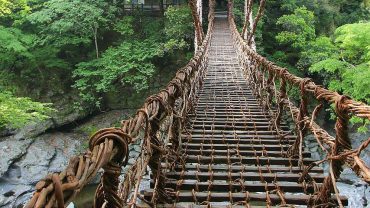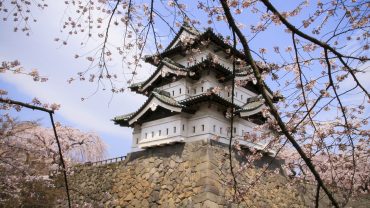Seoul Cultural Tourism Volunteer Guides
“Seoul Cultural Tourism Volunteer Guides” are experts that are knowledgeable in Seoul’s history and culture. They volunteer as guides to help visiting tourists understand Seoul in a deeper way.

1. Walking Tour Introduction
1.1. About
There are 29 different tours available with a program that is classified under six themes with twenty-six walking tour courses (the Gyeongbok Palace, the Changdeok Palace, Bukchon, Cheonggye stream, the Namsan fortress, Seonggyungwan, etc) and three permanent tours including ‘Tong-Tong’ course for Seoul City Hall.
- Historic-Culture area
- Traditional Cultural area
- Modern Culture area
- Environmental and Ecological Restoration area
- Traditional Market area
- Themed course on the Weekends
1.2. Hours
Weekdays: 10 a.m., 2 p.m. Weekends: 10 a.m., 2 p.m., 3 p.m.
※ Please be advised the time for opening and closing of the courses are available at detail content view.
1.3. Number of Participants
Individual: Up to 10 people Group: 11 or more people
※ 21 or more people for the Gyeongbokgung, Changdeokgung, Changgyeonggung tours
1.4. Language
Korean, English, Japanese, Chinese
1.5. Fee
Free (Admission fees to the royal palaces & fees for cultural experience programs, etc. are not included in the tours and must be paid for separately.)
2. Walking Tour Reservation Information
2.1. Making Reservations
Reservations must be made online at least 3 days in advance
※ All reservations can be made on the Visit Seoul mobile website (m.dobo.visitseoul.net)
※ As tour guides are volunteers, there may be instances in which a certain tour may not be available because a volunteer tour guide is unavailable for that tour date or time.
※ Spots fill up quickly on weekends, holidays, and during peak season (April, May, September, October), so if you would like to make a reservation during this time, please consider reserving in advance.
※ Reservations for groups of 50 or more must be made at least 2 weeks in advance.
※ For Seoul Cultural Tourism Volunteer Guide Permanent Tours, please contact the tour sites directly.
2.2. Viewing / Cancelling Reservations
※ Your reservation details will be sent to you via mobile text message and e-mail. You can also view your reservation details on the “View / Cancel Reservation” page on the website and mobile web.
※ Changes cannot be made to a reservation once it has been made. If you would like to change your reservation, please cancel your reservation first and make a new reservation.
※ If you would like to cancel your reservation, you may do so on the website or mobile website up to 24 hours in advance. If it is less than 24 hours in advance, you may cancel via phone or e-mail up to 6PM. After 6PM the tour cannot be cancelled, so please cancel in advance.
※ If a tour guide has to cancel or adjust the tour or time due to personal reasons, we ask for your understanding.
2.3. Meeting Place
Meet at the designated meeting place for each tour.
3. Seoul Cultural Tourism Volunteer Guide Permanent Tours
3.1. Namsangol Hanok Village
Languages: Korean, English, Chinese, Japanese
Hours of Guided Tours: 10:30, 12:00, 14:00, 15:30
Fee: Free
Closed: Every Tuesday
Phone: +82-2-2264-4412
Transportation: Take subway line 3 or 4 to Chungmuro Station. Go out exit 3 or 4 and walk about 5 minutes along the road between Dongguk University Chungmuro Media Center and Maeil Business Newspaper.
3.2. War Memorial of Korea
Languages: Korean, English, Chinese, Japanese
Hours of Guided Tours: 10:00~17:00
Fee: Free
Closed: Every Monday (except for when the Monday falls on an extended holiday, in which case the tours resume regular business hours, and tours do not operate on the day after the last day of the extended holiday.)
Phone: +82-2-709-3139
Transportation: Take subway line 4 to Samgakji Station. Go out exit 1 and walk about 5 minutes.
3.3. Contact Information
Weekdays: Seoul Guided Walking Tour Office / Hours of Operation: 9 a.m. – 6 p.m. (Closed 12 p.m. – 1 p.m.)
Phone: +82-2-6925-0777 Fax : +82-2-3788-0899
E-mail : [email protected]
Weekends & Holidays: DASAN Call Center / Hours of Operation: 9 a.m. – 10 p.m.
DASAN Call Center(Tel : 02-120)
Stone Construction Culture in Museum’s Open Garden
Various stone cultural assets such as stone pagoda, stone lantern, and monk stupa are located around the forest trail along the National Museum of Korea’s Open Garden themed on Korean traditional landscape. Also, Dragon Falls located on the deep side of the forest. With such stone cultural assets and Dragon Falls, the open garden serves as the urban rest area in harmony with arts and nature. Walk along the trail in the museum garden, find hidden traditional relic and attractions, and meet mysterious stories related to them.
1. Walking Tour Details
- Route: National Museum of Korea South Gate (Start) -> Cheongjajeong (Pavilion with Celadon Roof Tiles) -> MuseumPath -> Stone Pagoda Garden -> Dragon Falls -> Yongsan Family Park -> Bosingak Bell -> Stone Buddha -> Pagoda Garden -> Monk Stupa Garden -> National Museum of Korea Courtyard
- Length of tour: 2 hours
- Meeting Place: In front of Mirror Pond Restaurant.
2. Main Tourist Attractions in Course
2.1. Geoul Pond and Cheongjajeong
Entering the south gate, a front gate of National Museum of Korea, a wide pond is located first. Geoul Pond reflects the whole museum on the water. At the edge of the pond, a pavilion named Cheongjajeong is placed with its pillars inside the pond. Cheongjajeong was made to celebrate the 100 anniversary of museum in Korea and the octagonal-shape pavilion has a beautiful blue roof.
2.2. Dragon Falls
‘Mir’ is an old Korean word meaning dragon. The name originated from the place named ‘Yongsan’ where the museum is located. The museum garden where Mir Falls, Mir Pond, and Mir Bridge are located is themed on traditional Korean landscape. Dragon Falls is hidden in the secret garden deep inside the forest.
2.3. Bosingak Bell
Bosingak Bell is a Buddhist bell used at a Buddhist temple. This bell was made in 1468 (14th year of King Sejong). Bosingak Bell was located in Jeongneung Temple inside Queen Shinduk’s tomb named Jeongneung Royal Tomb. Queen Shinduk was the second queen of King Taejo during Joseon Dynasty. After Jeongneung Temple disappeared, Bosingak Bell was moved to Wongaksa Temple and kept at bell tower after Japanese invasion in 1592. Bosingak Bell was used at Bosingak Pavilion at Jongno, Seoul for watch-night bell until 1985. The period where Bosingak Bell was made is clear as an inscription remains on the bell.
2.4. Stone Buddha
Stone Buddha embodies the shape of Buddha. Stone Buddha didn’t exist for a while when Buddha was alive and even after he entered into Nirvana. This is because Buddha opposed Stone Buddha to prevent deification of him. As a result, Stone Buddha didn’t exist until 500 years after the death of Buddha. It is said that people in Gandhara and Mathura started making Stone Buddha around the same time in the first century. In Korea, Stone Buddha has been made continuously after Buddhism was introduced. In the museum’s garden, there are two stone statues made during Goryeo Dynasty.
2.5. Pagoda Garden
In the broad term, pagoda is a sculpture made to celebrate certain event. In pagoda garden, there are numerous stone pagodas made from Unified Silla period to Goryeo Dynasty. There is also a stone lantern which was placed in front of Buddhist sanctuary in a temple. In Pagoda Garden, a stupa of Nawong who was a great Buddhist monk during the end of Goryeo Dynasty is placed, too.





Comment (0)